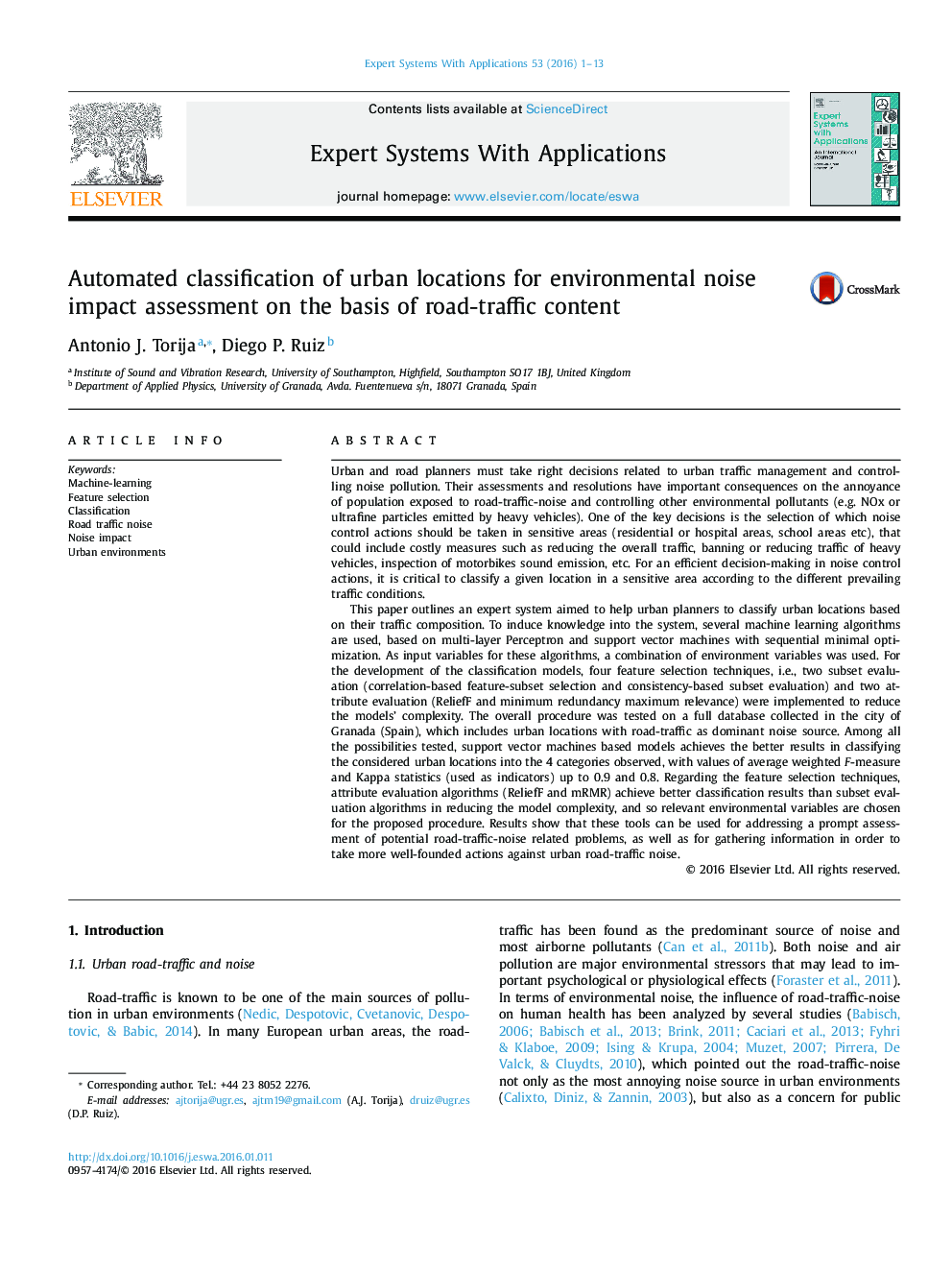| کد مقاله | کد نشریه | سال انتشار | مقاله انگلیسی | نسخه تمام متن |
|---|---|---|---|---|
| 381985 | 660717 | 2016 | 13 صفحه PDF | دانلود رایگان |
• Sampled urban locations are grouped into 4 clusters according to HV and MM content.
• SMO-models outperform MLP-models in correctly classifying obtained clusters.
• Attribute evaluation algorithms achieve better results than subset evaluation algorithms.
• Environment variables, LF sound levels and Leq are the most influential input variables.
Urban and road planners must take right decisions related to urban traffic management and controlling noise pollution. Their assessments and resolutions have important consequences on the annoyance of population exposed to road-traffic-noise and controlling other environmental pollutants (e.g. NOx or ultrafine particles emitted by heavy vehicles). One of the key decisions is the selection of which noise control actions should be taken in sensitive areas (residential or hospital areas, school areas etc), that could include costly measures such as reducing the overall traffic, banning or reducing traffic of heavy vehicles, inspection of motorbikes sound emission, etc. For an efficient decision-making in noise control actions, it is critical to classify a given location in a sensitive area according to the different prevailing traffic conditions.This paper outlines an expert system aimed to help urban planners to classify urban locations based on their traffic composition. To induce knowledge into the system, several machine learning algorithms are used, based on multi-layer Perceptron and support vector machines with sequential minimal optimization. As input variables for these algorithms, a combination of environment variables was used. For the development of the classification models, four feature selection techniques, i.e., two subset evaluation (correlation-based feature-subset selection and consistency-based subset evaluation) and two attribute evaluation (ReliefF and minimum redundancy maximum relevance) were implemented to reduce the models’ complexity. The overall procedure was tested on a full database collected in the city of Granada (Spain), which includes urban locations with road-traffic as dominant noise source. Among all the possibilities tested, support vector machines based models achieves the better results in classifying the considered urban locations into the 4 categories observed, with values of average weighted F-measure and Kappa statistics (used as indicators) up to 0.9 and 0.8. Regarding the feature selection techniques, attribute evaluation algorithms (ReliefF and mRMR) achieve better classification results than subset evaluation algorithms in reducing the model complexity, and so relevant environmental variables are chosen for the proposed procedure. Results show that these tools can be used for addressing a prompt assessment of potential road-traffic-noise related problems, as well as for gathering information in order to take more well-founded actions against urban road-traffic noise.
Journal: Expert Systems with Applications - Volume 53, 1 July 2016, Pages 1–13
